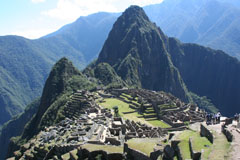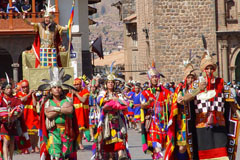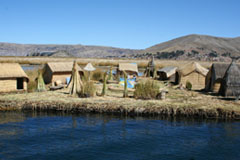Best of Peru & Bolivia
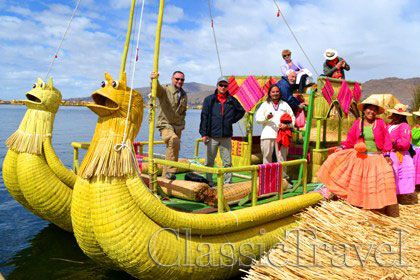
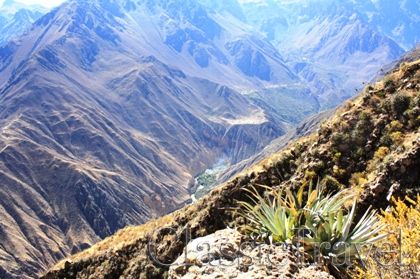
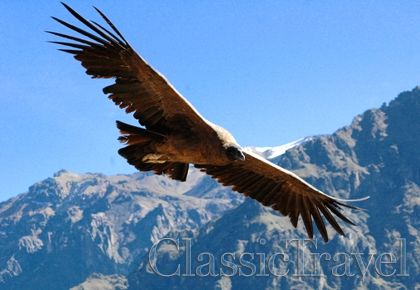
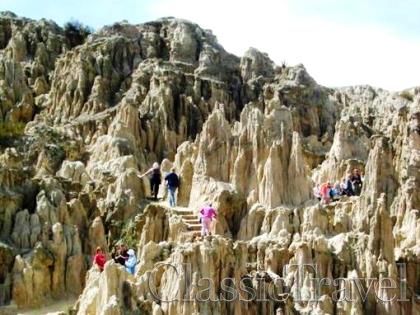
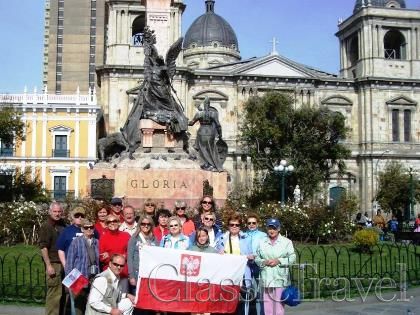
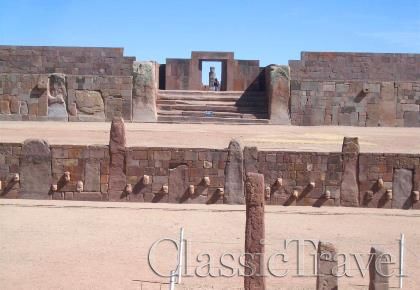
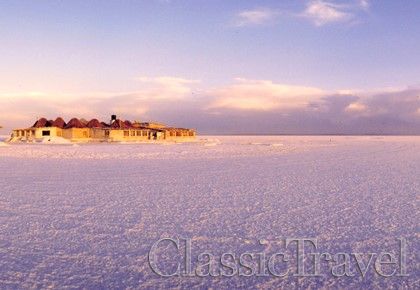
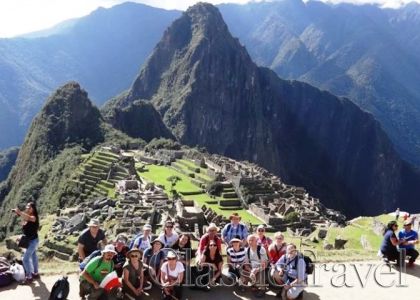
Best of Peru & Bolivia
Machu Picchu, Colca Canyon, Lake Titicaca, Uyuni Lake
This tour actually offers the best of both countries. It combines monuments of nature and monuments of local civilizations. The program starts in Lima, the capital of Peru and after getting to know the traces of Polish achievements left there, we will reach the beautiful "white city" of Arequipa lying at the foot of three volcanoes. We will climb the road between them and then to altiplano and to Colca Canyon - the deepest in the world. After reaching it, we will climb even higher to the shore of Lake Titicaca. There, we will learn the culture of the Uros and Taquile Indians and on the shore of the lake we will see the ruins of the cult place which is Tiwanaku and Puma Punku. From La Paz we will fly south to not only see but also to feel the impact on our body, the huge lake Uyuni, famous for having the largest resources of Lithium on earth. On the way to Cuzco, we'll go through Raqchi and Andahuaylillas, which have the secrets of the Inca Empire. And in Machu Picchu we will try to see how the waking sun illuminates the ruins of this most interesting place left to us by the Incas.
-
Author: Roman Pomykala (Trip Participant)Travel date: June 21 - July 3 2015Date posted: 21 July 2015
-
Author: Bożena Rewers (Trip Participant)Travel date: 21.06-06.07.2014Date posted: 19 July 2014
Add Comments or Review the Trip
Day 1 (Fri): Fly to Lima
Departures from USA in the afternoon or evening with arrivals into Lima in evening or early morning next day. Airport pick up by guide and transfer to hotel in city center Lima/Miraflores, welcome drink and overnight stay.
Day 2 (Sat): Tour Lima / Fly to Arequipa
After breakfast, we will begin touring Lima with a private guide. Start with the "Park of Love" located on the Pacific coast and then the famous Archaeological Museum to get acquainted with the rich history of Peru. Afterwards, we will have a buffet lunch with a huge selection of typical Peruvian healthy products. Then we will go to the center to see the colonial city center with the "Plaza de Armas" (the market square) and the President's Palace, the Railway Station and the Cathedral with the Francisco Pizarro sarcophagus. In this square, we find traces of Poles. Directly from the center, we will go to the airport to fly to Arequipa for an evening departure. Upon arrival, welcome by the local guide and transfer to the hotel in the city center for the night. (B,L)
Day 3 (Sun): Tour Arequipa / Drive to Chivay/Colca Valley
From the morning, we will start a tour of Arequipa (2,346m), known as the "White City", built from the white stones of the nearby majestic volcano “El Misti” whose streets were designed by Polish engineer, Ernest Malinowski. Among others, we’ll see colonial Cathedral, the Church of La Compania and the famous St. Catalina Convent, a remarkable relic of Spanish colonial times which lay inside the city in mystery for nearly 400 years.
At noon, with a private guide we will start the drive to Chivay - the capital of the Colca Valley.
The route will lead through the altiplano at 3,500 - 4,000 m. and the "Agua Blanca" nature reserve. Upon arrival in Chivay (3.630m), check into the Casa Andina Colca hotel. Next, we will drive the Avenida Polonia to the hot springs of La Caldera to enjoy a relaxing bath. We will also see a commemorative plaque dedicated to Polish canoeists, on which is written: "From this place on May 13, 1981, the Polish Academic Kayak Expedition CANOANDES'79 set off, which discovered and acquired for Peru and the World the deepest canyon of the Rio Colca Land." Dinner and overnight at the hotel. (B,D)
Day 4 (Mon): Colca Canyon - Cruz del Condor - Cabanaconde - Sangalle
Very early in the morning after breakfast at the hotel, drive down the Rio Colca Valley to the beginning of the canyon. The entire valley is filled with terraced fields with a system of earth water channels built in pre-Inka times. The beginning of the Colca Canyon named "Cruz del Condor" is the place from which we will observe the famous Great Condors, flying high above. Continue to the village of Cabanaconde (3,350m), where we will stop for a moment at the local hotel to change and leave the main luggage. Around 11:00am (with boxed lunch and handy backpack) we will start a 3-hour (optional) descent to the bottom of Colca Canyon to the Sangalle oasis. Accommodation in bamboo bungalows sleeping on bunks with mattresses and bedding. To wash water from the stream, lighting by candlelight/lanterns, and swimming in the pool with lukewarm water. After a short rest, we will begin descent to the Colca river, to the place from which on May 18, 1981 Polish canoeists began their historic rafting trip. A modest dinner with hot tea. Overnight at the bottom of the deepest canyon in the world in a hotel with a million stars. (B,L,D)
Note #1: Those who will not go down to the bottom of the canyon will stay at the hotel in Cabanaconde under the care of a local pilot and go hiking along the edge of Colca Canyon.
Note #2: Those who after going down to Sangalle decide that they prefer to go on the mule next morning, must report it to the guide so that he can book such a mule. The cost of renting a private mule is $20 to $25.
Day 5 (Tue): Colca Canyon/Sangalle - Cabanaconde - Chivay - Puno
Wake up at 4:30 in the morning and after drinking coffee / tea, we will start walking out of our camp (2,200 m above sea level) to Cabanaconde. After a 3-4 hour climb on a steep trail, we will reach our hotel in Cabanaconde. Time to freshen up and breakfast, afterwards we start a 5-6 hour drive to Puno (3.810m). Upon arrival, check into hotel on the shore of the lake. Dinner and overnight at the hotel. (B,D)
Day 6 (Wed): Titicaca Lake, Uros & Taquile Islands
After breakfast, a boat trip to the famous Uros Indians, living on the floating reed islands on Lake Titicaca. The Uros people are probably the only community in the world that lives on the islands they built, surviving from fishing and hunting birds.The plants used to make their island, homes, boats, etc. called tortora reeds.
We continue with crossing the lake (2 hours) to reach Taquile Island. The natives living there today uphold old traditions in farming and weaving. Here, men and women have equal roles, knitting and farming. We'll have lunch with local products. Return to overnight at hotel in Puno. (B,L)
Day 7 (Thurs): Puno - Tiwanaku - La Paz
After an early breakfast, we will start the trip to La Paz. Following along the shore of the lake and in the town of Desaguadero, we will cross the border to Bolivia. After, we will leave the huge plateau where the famous ruins of Tiahuanaco (in Quechua) are located - the legendary birthplace of the Inca Empire at the Gate of the Sun. It is one of the most important archeological complexes in South America. The ruins of monumental buildings have survived here: the Sun Gate, Akapan's stone pyramid or Kalasasaya Palace. This place was the capital of the Tiahuanaco-Wari Empire, which existed for over two thousand years (the beginning of 1,500-year BC). Lunch at a nearby restaurant. After a 2 hour drive we will reach our hotel in the center of La Paz (3,850 m above sea level). (B,L)
Day 8 (Fri): Tour La Paz
Morning starts a day-long tour of La Paz, the largest city of Bolivia. We will see, among others: the Cathedral, the Church of St. Francis, Government and Congress building and the famous witch marketplace, where you can buy various talismans and amulets. After lunch at a local restaurant, we will go to see the famous "Moon Valley", where for thousands of years wind, rain and sun have carved in the rocks various and beautiful rock formations. Overnight in our hotel. (B,L)
Day 9 (Sat): Fly: La Paz - Uyuni
After breakfast, transfer to the airport El Alto (4,060m) and a short flight to the town of Uyuni (3,600m). Arrival at 10:30am. Welcome by a local guide and start the 3-day exploration of the famous Salt Lake Uyuni. It has the largest area in the world - over 10,000 km2, where more than 50% of the world's lithium resources are located (famous for its calming effect and positively affects the circulatory system). Dinner and overnight at the lakeside in a hotel partly built of salt blocks. (B,D)
Day 10 (Sun): Salt Lake Uyuni
After breakfast, with a view of the huge flat area (3,656 m) of the salt lake, we set out on a full-day exploration of its dried salt surface. We will see places where salt is collected in cones or cut into salt blocks. At noon we reach the island of Incahuasi, which lies in the central part of the lake and we will have lunch there. After a short rest we will start the return journey with a different route through this salt desert / lake. The blue sky and the surrounding volcanoes make an unforgettable impression on the surface. Dinner (on your own) and overnight in our hotel. (B,L)
Day 11 (Mon): Fly to La Paz – Drive to Puno
After breakfast, a return trip to the airport in the town of Uyuni. Departure at 10:50am, arrival in La Paz at 11:35am. short flight to La Paz. Directly from the airport we will start a 4 hour drive to Puno in Peru. We will eat our packed lunch while crossing the border in Desaguadero. Dinner (on your own) and overnight at our hotel in Puno. (B,L)
Day 12 (Tues): Drive: Puno - Cuzco
After breakfast, we will start a day trip to Cuzco through the Sacred Valley of the Urubamba River. Initially, we will drive along the lake to Juliaca on the road that was designed and built in 1878 by two Polish engineers, Władysław Kluger and Edward Habich. After crossing the La Raya pass 4,313m. we will enter the Cuzco Region.
We will eat lunch in a tourist restaurant and after a short rest we will go further in Raqchi village, see the ruins of the powerful monastery of God Wirakocha and stone granaries from the Inca empire. We continue the journey of Andahuaylillas, where in the local church there is a unique chapel with rich sculptures and paintings, called the "Peruvian Sistine Chapel". We reach our hotel in the city center in the afternoon. Dinner (on your own) and check into hotel in the city center. (B,L)
Day 13 (Wed): Rainbow Mountain (optional/additional trip)
Day trip from Cuzco from 5:30 am to 8:00 pm with breakfast and lunch. Cost for a group of min 15 pax: $90.
Day 14 (Thurs): Tour Cuzco / Drive: Ollaytantambo - Aguas Calientes/Machu Picchu
After breakfast, the first part of visiting Cuzco - the former capital of the Inca Empire called "Qosco". We will see the ruins of the fortress of Sacsayhuaman and Qenko. In the village of Chincheros, we will see how Indian women weave beautiful tapestries and scarves from natural plant and animal products. After arriving in the unique town of Ollaytantambo, whose origins reach the Inca Empire, we will visit the ruins of the famous fortress of Ollantaytambo. Then we will go by train - 1.5h to Aguas Calientes station (2,000m) located at the foot of Machu Picchu. Dinner and overnight at a local hotel. (B, D)
Day 15 (Fri): Machu Picchu - Cuzco
Early morning trip to Machu Picchu (2,400m) and start a walking approach to Inti Punku - the Sun Gate, to see the sunrise over the ruins of this mysterious city. Sightseeing with local guide from the entrance to the so-called watchtower, from where there is a magnificent view of the city ruins. Then, we will go through all the city's sectors, admiring its unique architecture and the whole constructions on the side of the mountain. A moment of free time for independent exploration-contemplation of this extraordinary place. At noon, take the bus to Aguas Calientes railway station to continue our return journey by train to Ollantaytambo where we will eat dinner and then by bus we get to our hotel in Cuzco in the evening. Check into our hotel. (B,D)
Day 16 (Sat): Fly: Cuzco - Lima / Depart Lima
After breakfast at the hotel, we will begin exploring the colonial Cuzco. In the center we will see the Qorikancha Cathedral and temples, on which the monastery and the main square were built. In the early afternoon, transfer to the airport in Cuzco and fly to Lima. After arriving and picking up baggage, we will move to the international part of the airport to check-in for overnight flights to the USA or Europe. (B)
Day 17 (Sun): Arrivals to USA/Europe
Overnight flight from Lima to New York or to Warsaw via one of the European airports. Arrival in the afternoon.
***End of the program***
Abbreviations: B - Breakfast; L - Lunch; D - Dinner
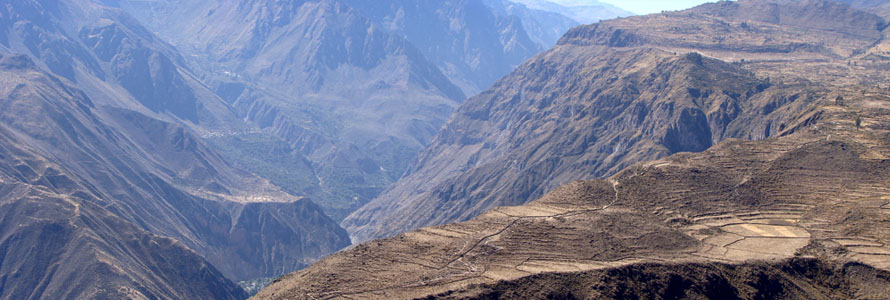
Machu Picchu
A pre-Columbian 15th-century Inca site located 2,430 metres (7,970 ft) above sea level. It is situated on a mountain ridge above the Urubamba Valley in Peru, which is 80 kilometres (50 mi) northwest of Cusco and through which the Urubamba River flows. Most archaeologists believe that Machu Picchu was built as an estate for the Inca emperor Pachacuti (1438–1472). Often referred to as "The Lost City of the Incas", it is perhaps the most familiar icon of the Inca World.
The Incas started building the "estate" around AD 1400 but abandoned it as an official site for the Inca rulers a century later at the time of the Spanish Conquest. Although known locally, it was unknown to the outside world before being brought to international attention in 1911 by the American historian Hiram Bingham. Since then, Machu Picchu has become an important tourist attraction.
The Inca Empire
The Inca Empire (Quechua: Tawantinsuyu) was the largest empire in pre-Columbian America. The administrative, political and military center of the empire was located in Cusco in modern-day Peru. The Inca civilization arose from the highlands of Peru sometime in the early 13th century. From 1438 to 1533, the Incas used a variety of methods, from conquest to peaceful assimilation, to incorporate a large portion of western South America, centered on the Andean mountain ranges, including large parts of modern Ecuador, Peru, western and south central Bolivia, northwest Argentina, north and north-central Chile, and southern Colombia into a state comparable to the historical empires of the Old World.
The official language of the empire was Quechua, although hundreds of local languages and dialects of Quechua were spoken. The Inca referred to their empire as Tawantinsuyu which can be translated as The Four Regions or The Four United Provinces.
There were many local forms of worship, most of them concerning local sacred "Huacas", but the Inca leadership encouraged the worship of Inti—the sun god—and imposed its sovereignty above other cults such as that of Pachamama. The Incas considered their King, the Sapa Inca, to be the "child of the sun."
Cuzco
Cusco is a city in southeastern Peru, near the Urubamba Valley of the Andes mountain range. It is the capital of the Cusco Region as well as the Cusco Province. In 2007, the city had a population of 358,935 which was triple the figure of 20 years ago. Located on the eastern end of the Knot of Cusco, its altitude is around 3,400 m (11,200 ft).
Cusco was the site of the historic capital of the Inca Empire and was declared a World Heritage Site in 1983 by UNESCO. It is a major tourist destination and receives almost 1.5 million visitors a year. It is designated as the Historical Capital of Peru by the Constitution of Peru.
Inti Raymi
Inti Raymi ("Festival of the Sun") was a religious ceremony of the Inca Empire in honor of the god Inti, one of the most venerated gods in Inca religion. According to chronicler Garcilaso de la Vega, Sapa Inca Pachacuti created the Inti Raymi to celebrate the winter solstice and a new year in the Andes of the Southern Hemisphere. Since 1944, a theatrical representation of the Inti Raymi has been taking place at Sacsayhuamán (two km. from Cusco) on June 24 of each year, attracting thousands of tourists and local visitors.
Lake Titicaca
Lake Titicaca is a lake located on the border of Peru and Bolivia. It sits 3,811 m (12,500 ft) above sea level, making it the highest commercially navigable lake in the world. By volume of water, it is also the largest lake in South America. The lake is located at the northern end of the endorheic Altiplano basin high in the Andes on the border of Peru and Bolivia. The western part of the lake lies within the Puno Region of Peru, and the eastern side is located in the Bolivian La Paz Department.
Five major river systems feed into Lake Titicaca. In order of their relative flow volumes these are Ramis, Coata, Ilave, Huancané, and Suchez. More than 20 other smaller streams empty into Titicaca, and the lake has 41 islands, some of which are densely populated.
Colca Canyon
The Colca Canyon is a canyon of the Colca River in southern Peru. It is located about 100 miles (160 kilometers) northwest of Arequipa. It is more than twice as deep as the Grand Canyon in the United States at 4,160 m., and it is promoted as the "world's deepest canyon." The south wall of the Canyon is 3,200 m above sea level, while the north wall is 4,200 m. The Canyon is 120 kilometers long. The Colca Valley is a colorful Andean valley with towns founded in Spanish colonial times, and still inhabited by people of the Collaguas and the Cabanas cultures. The local people still maintain ancestral traditions and continue to cultivate the pre-Inca stepped terraces.
The first successful conquest of the canyon took place in 1981 by the Polish student organization "Bystrze". Among the brave were Andrzej Pietowski, Piotr Chmielinski, Jerzy Majcherczyk (raft captain), Jacek Bogucki (filmmaker) and Zbigniew Bzdak (photographer). The conquest took place during the kayaking expedition Canoandes '79, with their achievements being published in the 1984 edition of Guiness Book of World Records (Colca Canyon was illustrated on the cover). The young Polish adventurers named a few parts of the canyon, confirmed by the Geographical Institute in Peru, including the John Paul II Waterfalls, Canyon of the Poles / Chocolate Canyon.
